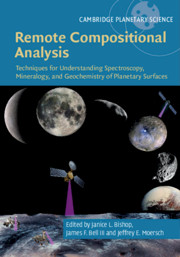 Remote Compositional Analysis
Remote Compositional Analysis Book contents
- Remote Compositional Analysis
- Cambridge Planetary Science
- Remote Compositional Analysis
- Copyright page
- Contents
- Contributors
- Foreword
- Preface
- Acknowledgments
- Part I Theory of Remote Compositional Analysis Techniques and Laboratory Measurements
- Part II Terrestrial Field and Airborne Applications
- 11 Visible and Near-Infrared Reflectance Spectroscopy
- 12 Raman Spectroscopy
- Part III Analysis Methods
- Part IV Applications to Planetary Surfaces
- Index
- References
12 - Raman Spectroscopy
Field Measurements
from Part II - Terrestrial Field and Airborne Applications
Published online by Cambridge University Press: 15 November 2019
- Remote Compositional Analysis
- Cambridge Planetary Science
- Remote Compositional Analysis
- Copyright page
- Contents
- Contributors
- Foreword
- Preface
- Acknowledgments
- Part I Theory of Remote Compositional Analysis Techniques and Laboratory Measurements
- Part II Terrestrial Field and Airborne Applications
- 11 Visible and Near-Infrared Reflectance Spectroscopy
- 12 Raman Spectroscopy
- Part III Analysis Methods
- Part IV Applications to Planetary Surfaces
- Index
- References
Summary
Stand-off Raman spectroscopy is emerging as a critical new tool for planetary exploration. Mounted on a rover, a stand-off Raman system can be used to rapidly identify areas of interest for subsequent, synergistic investigations with other stand-off or close-up (arm-mounted) instruments; survey broad areas and perform reconnaissance tasks from a fixed location; and increase the efficiency of mission operations where targets of interest are in areas that are too hard to access for a rover. Not surprisingly, NASA’s next Mars mission will fly a stand-off Raman system as part of the SuperCam instrument package. This chapter reviews two stand-off Raman systems that paved the way for the development of new technologies and instrument architectures for robotic stand-off planetary exploration using Raman spectroscopy, including the SuperCam instrument suite.
- Type
- Chapter
- Information
- Remote Compositional AnalysisTechniques for Understanding Spectroscopy, Mineralogy, and Geochemistry of Planetary Surfaces, pp. 274 - 286Publisher: Cambridge University PressPrint publication year: 2019
References
- 3
- Cited by
